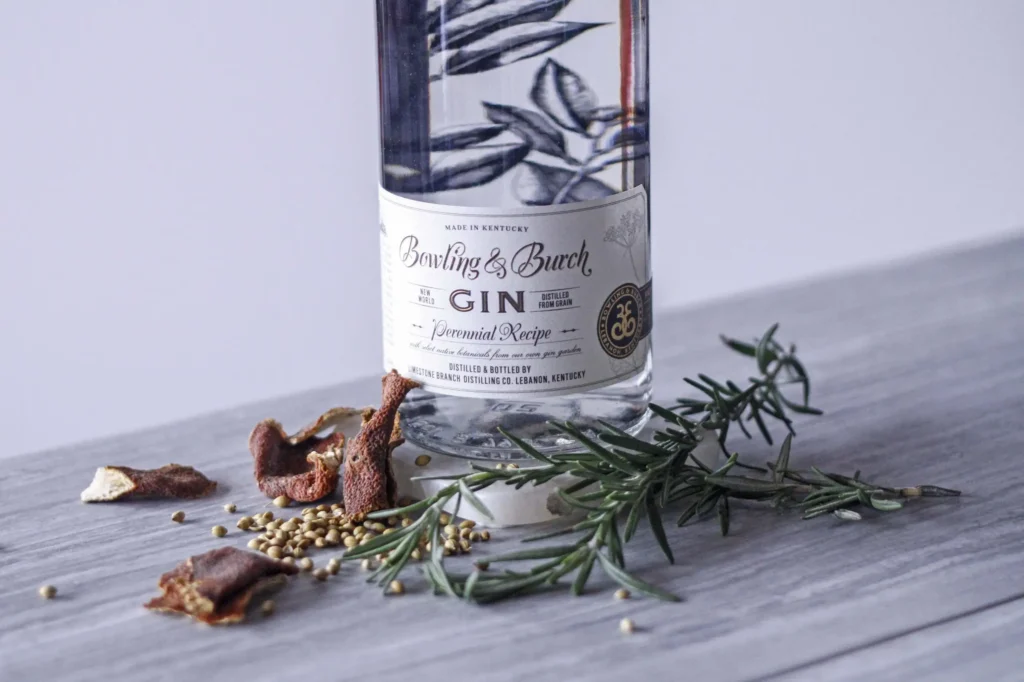It’s no secret that 17 different botanicals are used in Bowling & Burch New World Gin, many of which are grown on-site at the distillery. What all of them are is still something of a secret — just to keep everyone guessing. But there are a few special ones that deserve a moment in the spotlight.
Like all gins, the main ingredient is juniper (Juniperus communis), and other common herbs include coriander and cardamom. But where Bowling & Burch really begins to head off into a new (and what we like to think better) direction is with its citrus and floral characteristics, thanks to these four ingredients.
Lemon Verbena (Aloysia citrodora)
Sometimes known as lemon beebrush, lemon verbena is a perennial shrub native to South America. While lemon verbena is ornamental, it’s also prized for its many culinary uses in foods, desserts, and beverages, as well as traditional medicine. It’s particularly in the leaf that the plant gives off its lemon scent, and it’s the leaves that are used in Bowling & Burch.
Lemongrass (Cymbopogon)
Also a southern hemisphere plant, the tall and grasslike lemongrass is likewise widely used as a culinary herb, particularly in Thai and Oriental cooking. Here, too, it is the leaves of the plant that are used in the gin, due to their citrus characteristics. Steve Beam, the master distiller behind Bowling & Burch, likes to layer in the lemon ingredients with sweet orange, bitter orange, and lemon peel, but it’s the lemongrass and lemon verbena that give the gin’s citrus flavor its well-rounded depth.
Honeysuckle (Lonicera)
When you first open a bottle of Bowling & Burch gin, the initial aromas are not citrus, but delicate floral notes. One major contributor is the bouquet from honeysuckle flowers harvested onsite at the distillery. Like hummingbirds and bees, haven’t we all had a taste of honeysuckle nectar right from a flower plucked from the plant? For the distilling process, the flowers are first dehydrated before going into one of the still’s gin baskets.
Hibiscus (Hibiscus rosa-sinensis)
The honeysuckle’s dance partner in Bowling & Burch’s aroma is the subtropical and highly ornamental flowering hibiscus plant. Its well-known for its use in teas and cold cures (it’s loaded with Vitamin C), and you’ve probably seen the blooms floating in the swimming pools of luxury hotels. There are scores of different types of hibiscus, which is in the same order as roses.
Everything in Its Place
Many gins are produced by putting ingredients into the neutral spirits liquid inside the still. But Bowling & Burch’s process is similar to that of the London dry gin process, meaning all its botanical components are placed in baskets inside the still and infused into the gin by the vapor rising through the still column.
A lower basket contains the heavier components, like the juniper and the regular citrus ingredients. A higher gin basket contains the lighter notes, keeping them very fresh and floral.
Beam believes the delicate qualities of Bowling & Burch are best appreciated neat, or with seltzer and just a touch of tonic, as well as in a classic martini. However you enjoy it, just take a moment to breathe in some of those lightly aromatic botanical wonders released when you first crack open a bottle.

